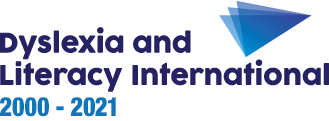Acquired dyslexia: a condition in which a person loses the ability to read and write as a result of damage to the brain.
Allophonic variation: variations in vocal output for a phoneme which are not pertinent to the sense.
Alphabetic principle: principle linking spoken and written language in languages which have a written alphabetical system. The units of the written system, the graphemes, by and large represent spoken sequences corresponding roughly to phonemes.
Co-articulation: an effect of pronunciation caused as the vocal tract re-positions itself to articulate spoken sequences corresponding to phonemes, resulting in a partial overlapping of these phonemes.
Developmental dyslexia: a neurobiological condition, often inherited, shown by difficulties in reading, spelling and composition of text, despite a normal or superior level of intelligence.
Decoding system: system allowing the identification of written sequences by segmentation into graphemes, transcoding each grapheme into its corresponding phoneme, and concatenation or fusion of the phonemes generated.
Direct access system: system allowing the identification of familiar written words by activation of their orthographic and phonological representations stored in long-term memory.
Dyscalculia: a neurobiological condition which affects the capacity to acquire arithmetical abilities and numeric cognitive skills.
Dysphasia or Specific Language Impairment (SLI): neurobiological condition which affects the development of oral language. It is frequently accompanied by difficulties in reading and spelling.
Dyspraxia or impairment of motor coordination: developmental condition which affects coordination, balance, fine motor skills, language, thought and perception.
Grapheme: symbol used in written alphabetic systems to represent phonemes. May be a single letter or group of letters.
Hyperkinaesthesia or Attention Deficit/Hyperactivity Disorder (ADHD): neurobiological condition caused by a disturbance of the cerebral ‘higher level’ executive functions which control behaviour and attention.
Irregular word: word containing one or more irregular grapheme-phoneme correspondences, that is to say one or more graphemes which are not pronounced as in the majority of words and/or one or more phonemes which are not written as in the majority of words.
Lexicalisation: type of error made when reading by offering a real word for a pseudo-word. Shows that the system for direct access is being over-exploited.
Matthew effect: name given by Keith Stanovich (1986) to the vicious circle by which the ‘the rich get richer and the poor poorer’, leading to a more and more serious divergence in reading development between those who read and those who do not, or read very little.
Percentile: one of 99 values dividing a series of data into 100 similar (or nearly similar) groups, which permits an estimation for the position of an individual in relation to others in the group sampled for the test.
Phoneme: the smallest sequence of speech in a language capable of altering the meaning of a word.
Phonemic awareness: awareness that spoken words can be analysed into phonemes.
Phonological abilities: processing skills in analysing sequences of speech into phonological units (syllables, onset/rime units and phonemes), and the ability to manipulate these units.
Phonological awareness: awareness that spoken phrases and words can be analysed into phonological units smaller than words.
Phonological dyslexia: A dyslexic subtype where the decoding system appears deficient, whilst the direct access system remains intact.
Phonological units: units into which sequences of words can be analysed. The three principal units are the syllable, onset/rime, and phoneme.
Pseudo-word: sequence of graphemes or phonemes which does not form an actual word in the language, but can be pronounced or spelled as if it were a word of the language.
Regular word: word in which the grapheme-phoneme correspondences are not ambiguous or, more precisely they correspond exactly and reciprocally, that is to say each grapheme corresponds systematically to the same phoneme, and the other way round.
Regularisation: type of mistake in reading or spelling an irregular word as if it is a regular word. Indicates overexploitation of the decoding system.
Sequencing ability: ability to memorise, recall and manipulate arbitrary sequences of items (alphabet, days, months, numbers).
Standard deviation (SD): measure of the spread of a series of results around their mean.
Standardised test: test applied to a representative group of individuals of a particular age or age range, from the results of which statistical values for the mean and deviation can be derived. Allows the prediction of a performance expected of individuals of the same age(s).


